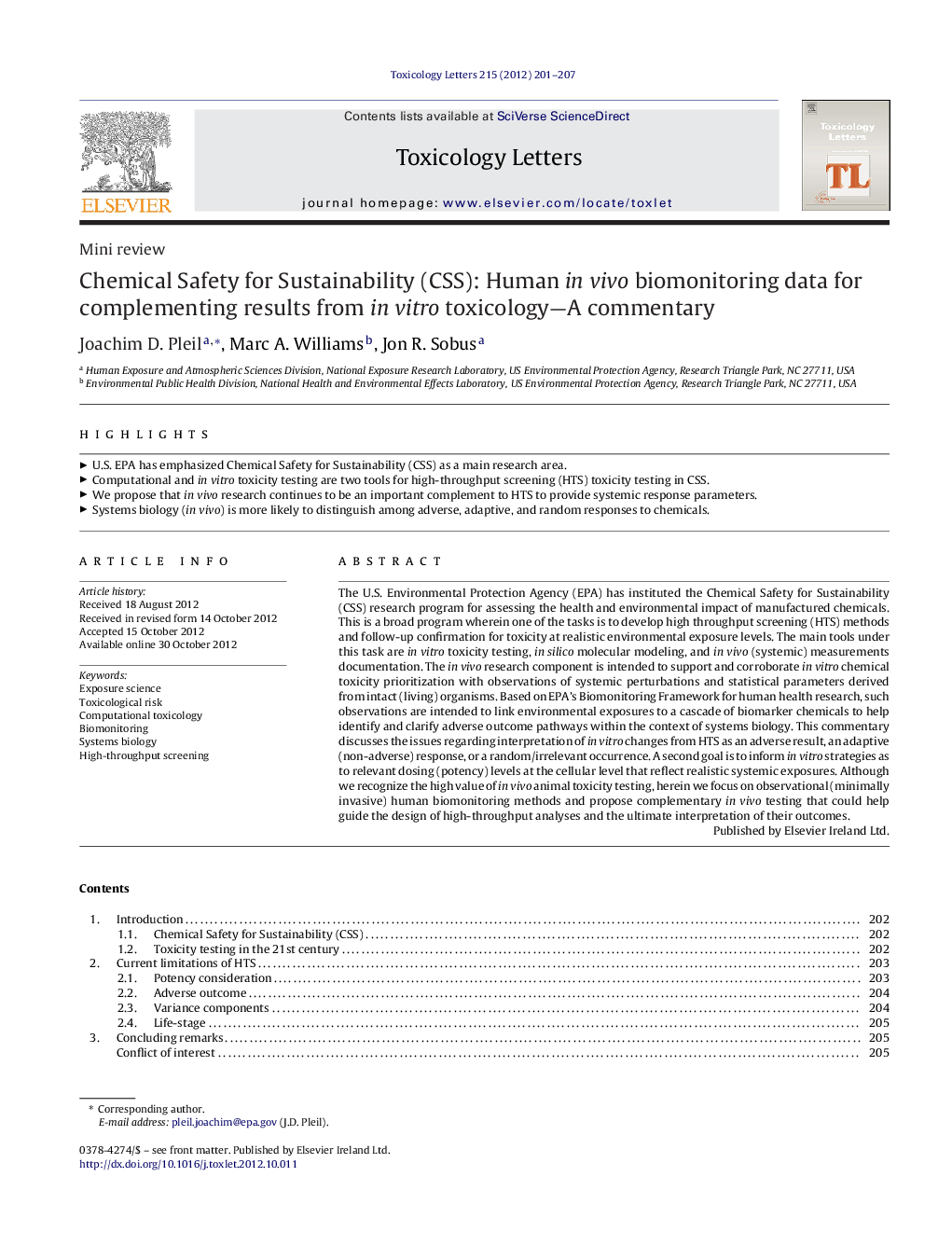| کد مقاله | کد نشریه | سال انتشار | مقاله انگلیسی | نسخه تمام متن |
|---|---|---|---|---|
| 2599448 | 1133207 | 2012 | 7 صفحه PDF | دانلود رایگان |

The U.S. Environmental Protection Agency (EPA) has instituted the Chemical Safety for Sustainability (CSS) research program for assessing the health and environmental impact of manufactured chemicals. This is a broad program wherein one of the tasks is to develop high throughput screening (HTS) methods and follow-up confirmation for toxicity at realistic environmental exposure levels. The main tools under this task are in vitro toxicity testing, in silico molecular modeling, and in vivo (systemic) measurements documentation. The in vivo research component is intended to support and corroborate in vitro chemical toxicity prioritization with observations of systemic perturbations and statistical parameters derived from intact (living) organisms. Based on EPA's Biomonitoring Framework for human health research, such observations are intended to link environmental exposures to a cascade of biomarker chemicals to help identify and clarify adverse outcome pathways within the context of systems biology. This commentary discusses the issues regarding interpretation of in vitro changes from HTS as an adverse result, an adaptive (non-adverse) response, or a random/irrelevant occurrence. A second goal is to inform in vitro strategies as to relevant dosing (potency) levels at the cellular level that reflect realistic systemic exposures. Although we recognize the high value of in vivo animal toxicity testing, herein we focus on observational (minimally invasive) human biomonitoring methods and propose complementary in vivo testing that could help guide the design of high-throughput analyses and the ultimate interpretation of their outcomes.
► U.S. EPA has emphasized Chemical Safety for Sustainability (CSS) as a main research area.
► Computational and in vitro toxicity testing are two tools for high-throughput screening (HTS) toxicity testing in CSS.
► We propose that in vivo research continues to be an important complement to HTS to provide systemic response parameters.
► Systems biology (in vivo) is more likely to distinguish among adverse, adaptive, and random responses to chemicals.
Journal: Toxicology Letters - Volume 215, Issue 3, 17 December 2012, Pages 201–207